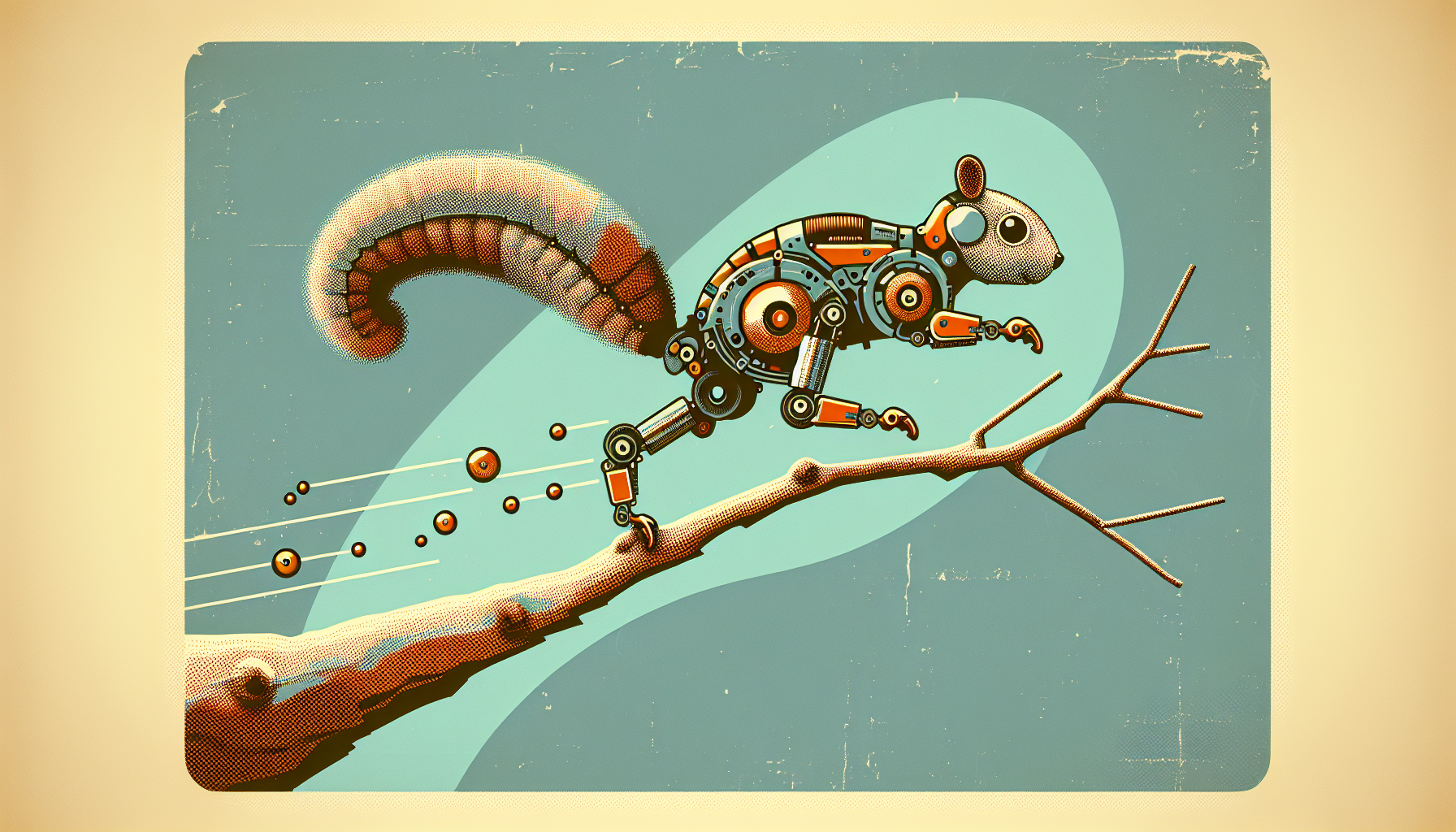In a captivating stride forward, a team of researchers at the University of California, Berkeley, has unveiled a groundbreaking leaping robot inspired by the nimble movements of squirrels. This fascinating creation, called Salto, pushes the boundaries of robotic capability by achieving something no robot has before: it can perform precise landings on narrow ledges, like branches or pipes. This innovation opens up new possibilities for robots to explore complex spaces, making them useful for construction, rescue missions, and environmental monitoring in challenging landscapes.
Inspired by Nature: The Art of Squirrel Leaps
Squirrels are famous for their incredible agility. They leap over large gaps, navigate through a maze of branches, and land with pinpoint accuracy on thin limbs. To create Salto, scientists focused on unraveling the secrets behind these movements. They discovered that squirrels mainly use their front legs to absorb most of the energy from their jumps. Additionally, their feet help apply the right forces to maintain balance upon landing. This skillful use of both vertical and horizontal forces ensures they never overshoot or fall short.
Salto’s Design and Performance
Salto, an acronym for Saltatorial Agile Locomotion on Terrain Obstacles, saw its initial development in 2016. This unique, one-legged robot is designed to mimic the impressive jumping abilities of squirrels. Recently, Salto has been upgraded with a gripping mechanism and the capability to adjust its stance after landing, greatly improving its balance. During controlled tests, Salto impressively leaped from one PVC pipe to another 25 times out of 30 attempts, frequently balancing upright on its narrow target.
Looking Ahead: Future Possibilities
Although Salto has not yet matched the agility of real-life squirrels, it marks a significant advancement in robotics. The next steps involve refining its gripping technology to enhance stability and enabling it to grasp more diverse surfaces. This progress could widen Salto’s reach from branches to more intricate environments, proving itself invaluable for tasks ranging from construction site inspections to environmental monitoring in rough terrains. The robot’s skill in navigating narrow pathways could also make it an asset in disaster zones, where other robots might falter.
A Tribute to Biomimicry and Technological Marvel
Salto’s creation highlights the ingenuity of biomimicry, where the brilliance of nature is mirrored in new technological advances. By capturing the extraordinary agility and balance of squirrels, scientists are engineering robots capable of remarkable feats. This innovation lays the foundation for more versatile, efficient, and safe robotic applications across various fields, ultimately shaping a promising future in technology.

Leave a Reply